Textiles Surface Design student at Huddersfield University. Blogging all things textiles. A mixture of inspiration and my own work.
Don't wanna be here? Send us removal request.
Photo

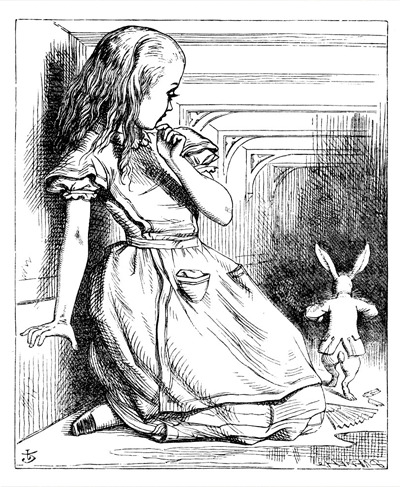
Printing Tenniel’s images required careful preparation. First, his drawings that had been done on paper had to be carved into woodblocks by engravers. The carvers chosen were the Brothers Dalziel, who were among the most skilled engravers of the Victorian age. Their woodblock engravings were then used as masters for making the electrotype copies; since metal is more robust than wood, these were made of metal for the actual printing of the books. The image above is of an early electrotype from the Macmillan archive and was used to print Alice’s Adventures in Wonderland. The original woodblocks are now held by the British Library.
1865 – 2015: 150 years of the Macmillan Alice
257 notes
·
View notes
Photo
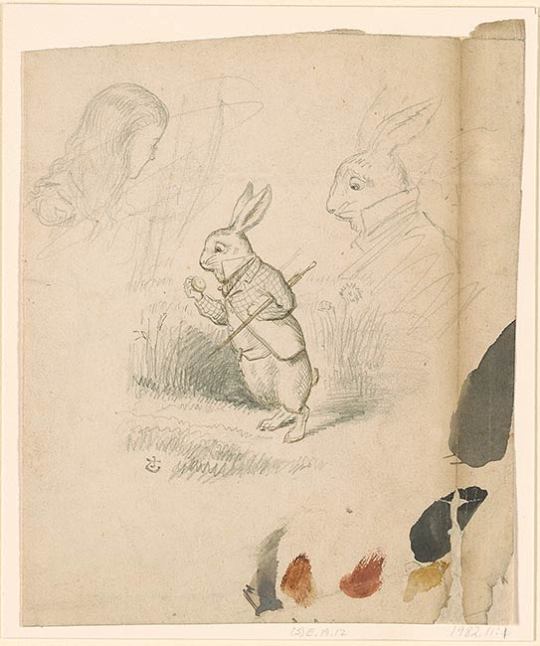
‘The White Rabbit Looking at His Watch, Studies of the Head of the White Rabbit and of Alice’ (1860’s) by John Tenniel (1820-1914).
Image and text courtesy The Morgan Library and Museum.
467 notes
·
View notes
Photo
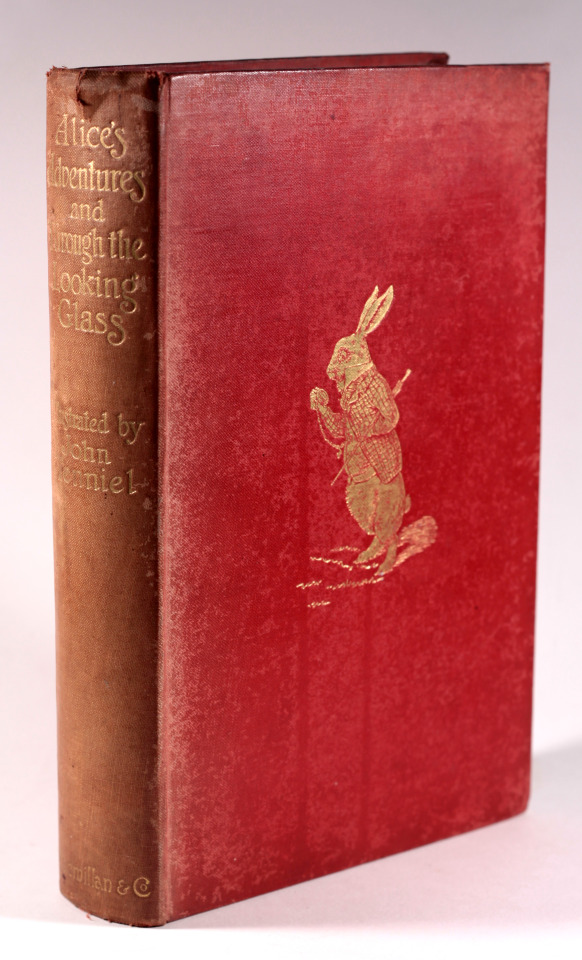
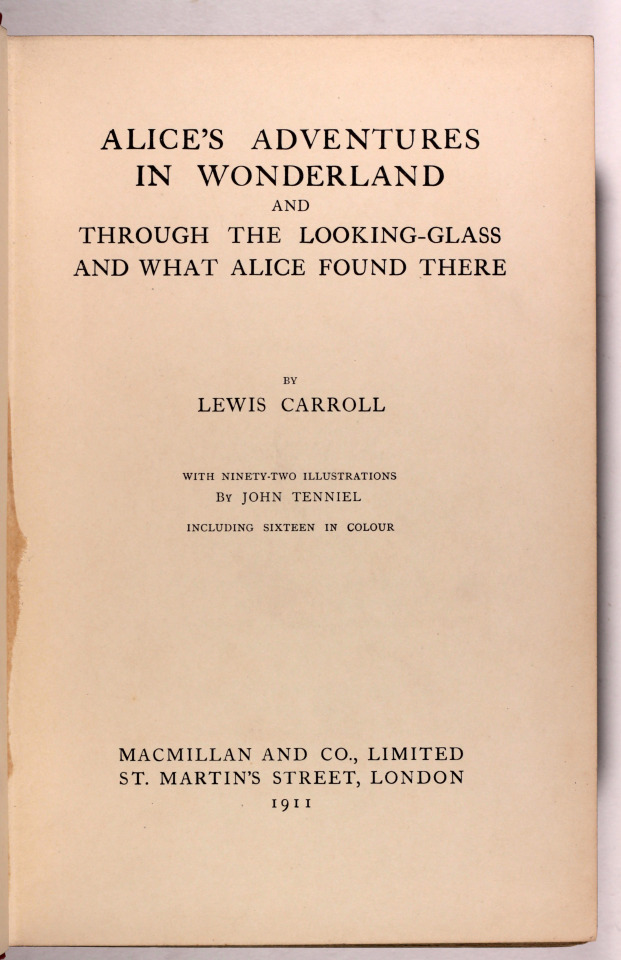
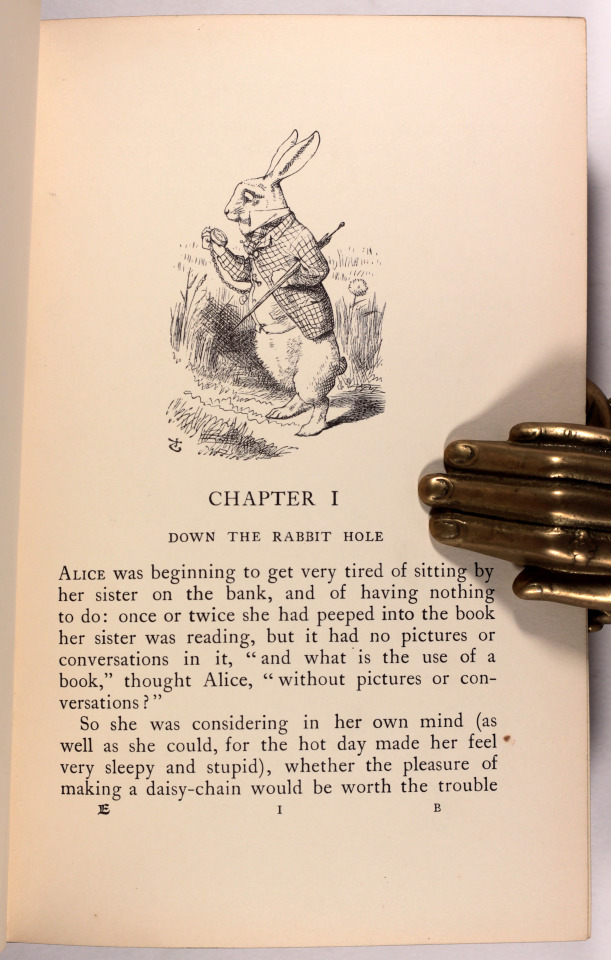

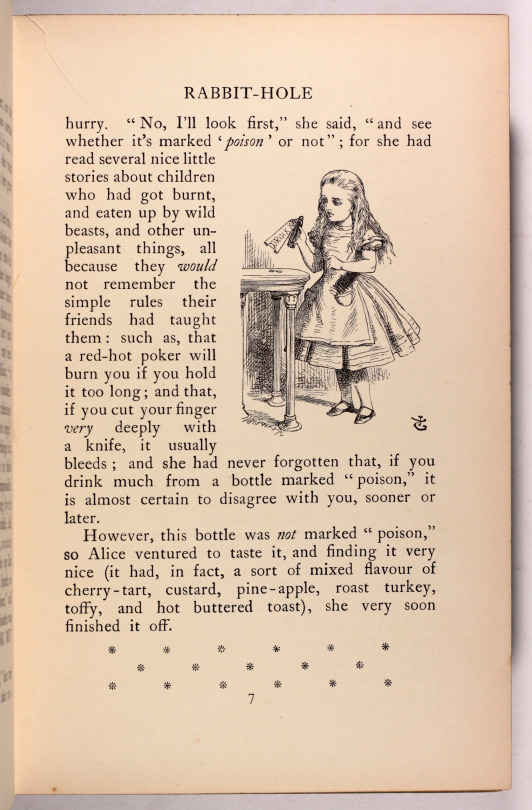
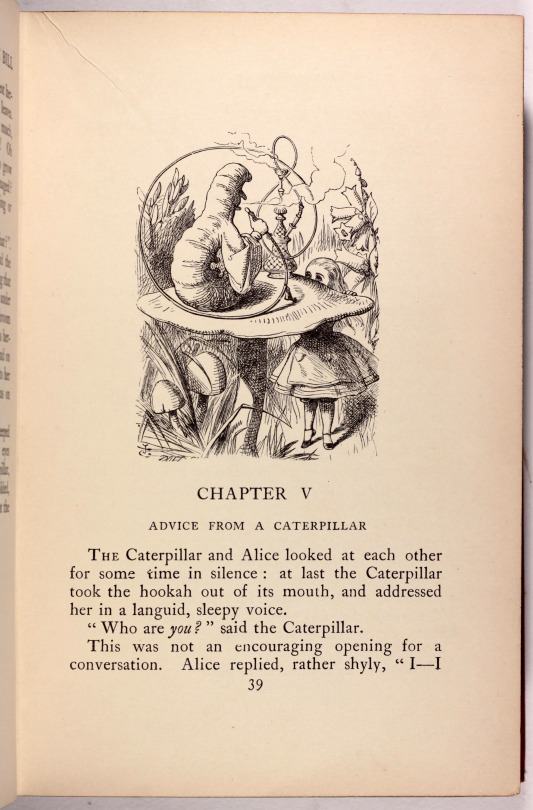
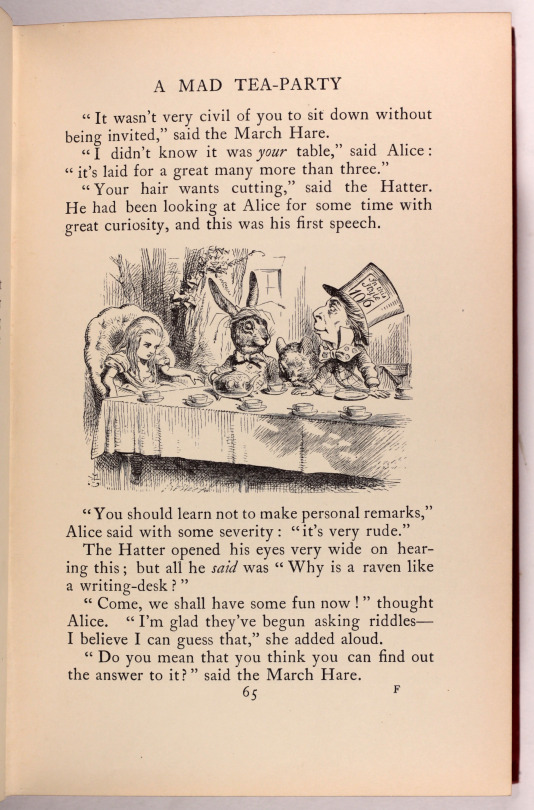
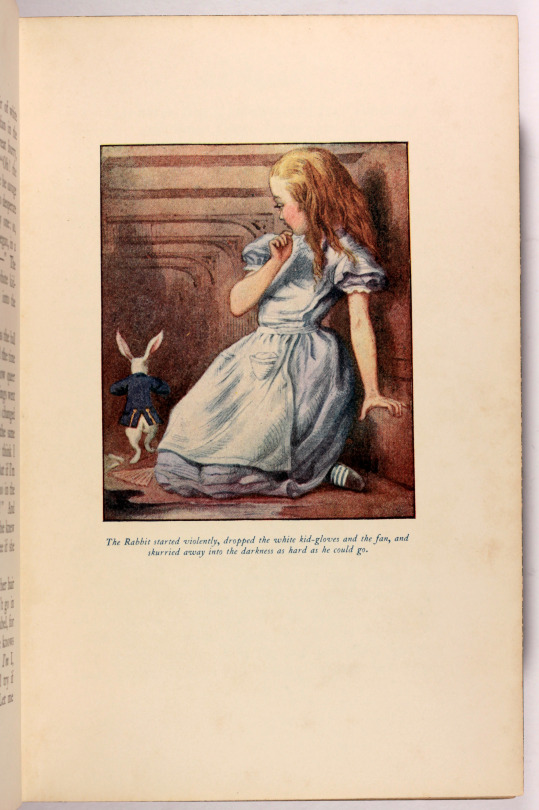
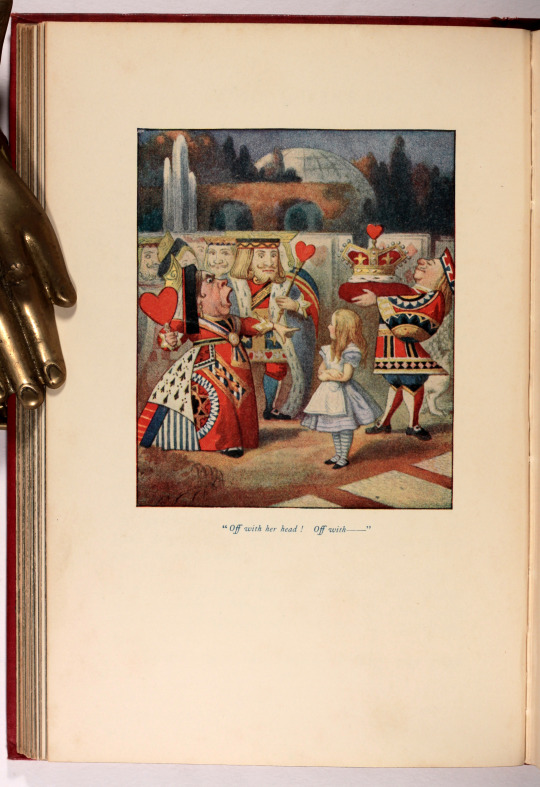
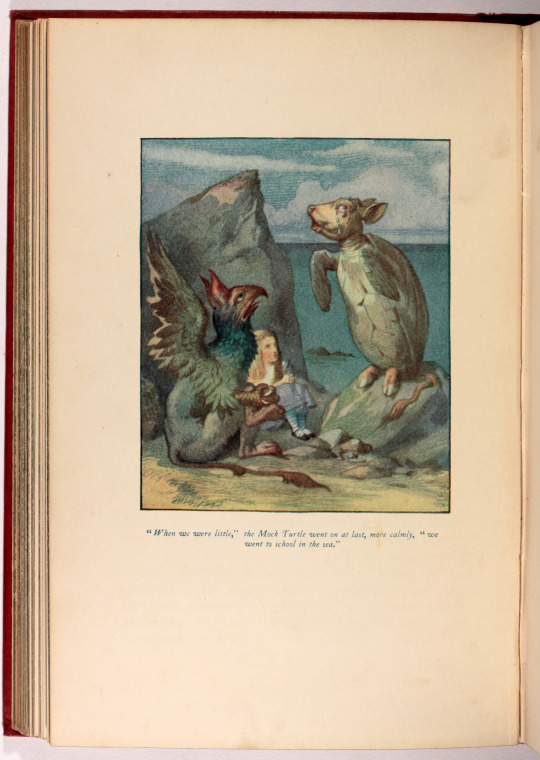
Superb Illustrated Edition of Alice’s Adventures in Wonderland and Through the looking glass and what Alice found there
This edition published in 1911 is the first time John Tenniel’s legendary illustrations were printed in colour
sadly the original covers are faded and marked as shown in the photos - but the contents are beautiful fresh and clean
6K notes
·
View notes
Photo
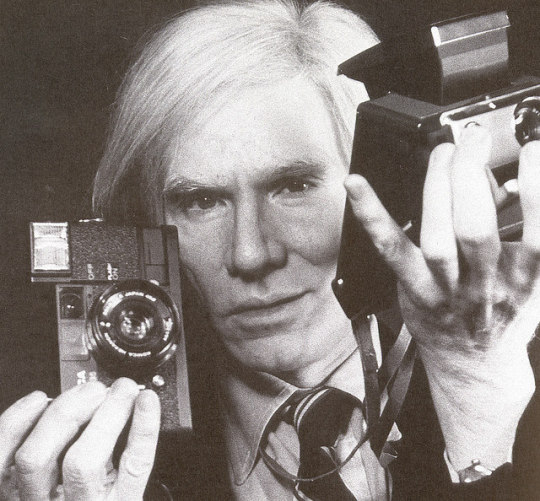
Andy Warhol-File Photo Digital Archive on Flickr.
65 notes
·
View notes
Photo
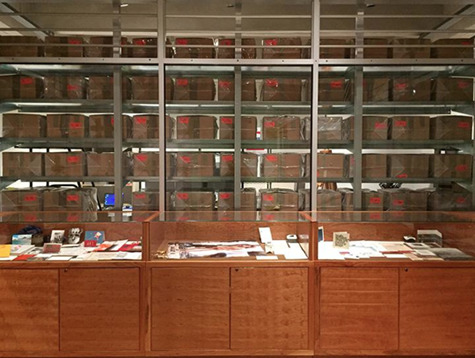
Andy Warhol’s 610 Time Capsules reveal secrets into his life. Here they sit, sealed and shelved.
88 notes
·
View notes
Photo
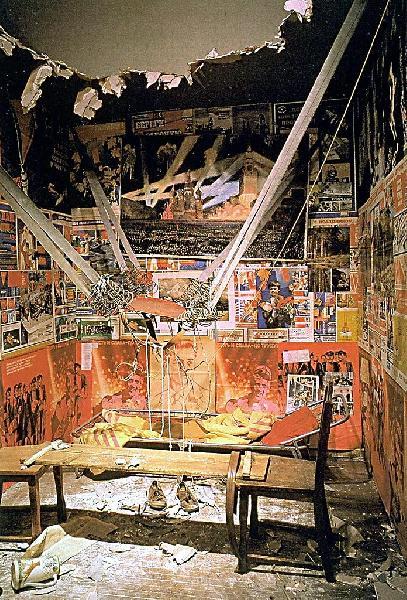
“The person who lived here flew into space from his room, first having blown up the ceiling and the attic above it. He always, as far as he remembered, felt that he was not quite an inhabitant of this earth, and constantly felt the desire to leave it, to escape beyond its boundaries. And as an adult he conceived of his departure into space.” - Ilya Kabakov
26 notes
·
View notes
Photo
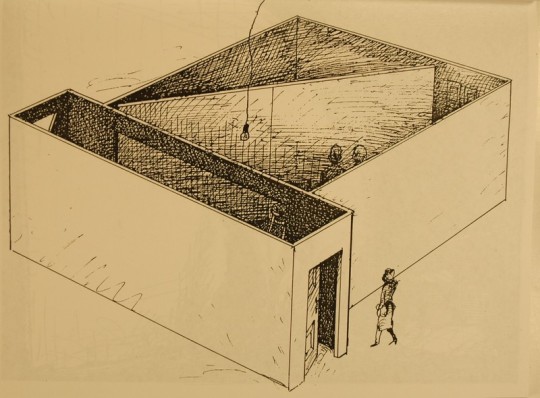
Ilya Kabakov, The Man who flew it in his painting
140 notes
·
View notes
Photo
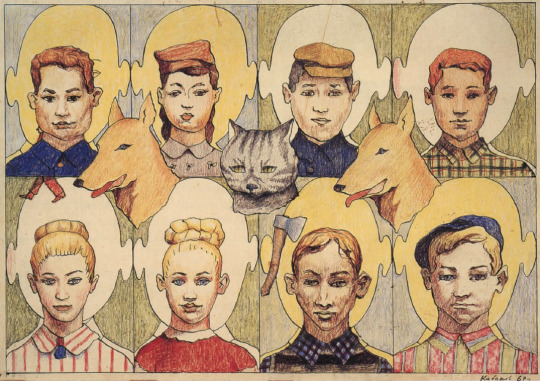
Ilya Kabakov, Heads, 1967
156 notes
·
View notes
Text
Thinking the Future through the Past
This lecture was presented by Dr Rowan Bailey, an academic who has explored the idea of archives within her work. We were questioned what is an archive as a structure and what exactly is an archive? Through this lecture we questioned what goes into an archive and why and how it is arranged. Looking at the archival engagement within contemporary practice and how creative individuals gain inspiration and insight from them. I find this topic highly interesting as an archive and in particular a personal archive is collection of interest, I have always been a collector of sorts from being a child and I still find it interesting in what people invest in.
The ideas of collecting, storing and hoarding came up in this presentation and in a way an archive is an organising format of hoarding, its the inability to let something go and that has in our opinion, value. In professional archives, we can expect to find items such as art, textiles, literature, documents, film (interviews), objects, letters, DNA and so much more, an archive can be absolutely anything. I think this is what fascinates me so much, how personal opinions can dictate what we believe to have value.
We looked at a range of artists who kept sorts of archives, one of the most famous being Andy Warhol, Warhol kept a range of random objects from his everyday life, he would pick a varied selection and label the collection with the date they are from. This is a fascinating concept to me, I think a great project could be created by just keeping a selection of objects which represent that day to you personally, it could be from rubbish to some purchases, it is of sorts a visual diary. I’m quite interested in conducting my own mini everyday archive but perhaps for a shorter period of time such as a month and create a collection of work based off each day.
Another artist of interest for me within this lecture was Ilya Kabakov, an American conceptual artist, what intrigued me so much about Kabakov’s work is that it holds a narrative, he would create an installation from a collection of items and then create a background for them, making a story for them and therefore bringing them to life. I love this concept, I love how narrative can be brought into something that may be considered rubbish or nothing of value and interest. I would love to play around with this element within my own work, perhaps gathering a selection of random objects and giving them stories and characters and creating illustrations from them.
0 notes
Text
How can you use Data Analysis to bring fresh in sites to your Work?
Date Analysis: The process of evaluating data using analytical and logical reasoning to examine each component of the data provided. This form of analysis is just one of the many steps that must be completed when conducting a research experiment. Data from various sources is gathered, reviewed, and then analyzed to form some sort of finding or conclusion. There are a variety of specific data analysis method, some of which include data mining, text analytics, business intelligence, and data visualisations. (Business Dictionary, Unknown).
This year we’ve had to conduct a study of 3000 words on either the topic of ecology, co-creative exchanges or using archives/ collections within our practice, throughout the essay we must support our ideas with date and facts to make our arguments stronger and well rounded.
Resources: Business Dictionary. (Unknown). Data Analysis Definition . Retrieved from http://www.businessdictionary.com/definition/data-analysis.html.
0 notes
Text
Historical examples of how Textiles has helped society & individuals
Craft is a method that is now commonly thought of as a hobby, many people take up knitting or embroidery etc as a form of relaxation, craft is a well known act in helping people unwind as well as people gaining a skill and knowledge. These aspects have been the same throughout history however the importance of textile craft where commonly much more than just for pleasure but instead to help with practical/ purposeful reasons, to show class, to promote messages and to help with the pains and struggles of everyday life.
Tapestries: Tapestries have been around for centuries and have been used for many reasons, even dating as far back as to the Egyptian period, where they were used to bury the dead, and then in the Greek empire to help show importance to buildings. The most commonly known purpose of the tapestries, is the use to help show class and aristocracy in the middle ages. Numerous of people adopted the method of tapestries, from high class families to religious organisations. Churches found the art of tapestry benefitted them in telling the stories of the bible, a method that I think could help tell the stories of God to those that couldn’t read and to show the prominence of the church. To high class families who owned tapestries, they weren’t just wall hangings for decorative purposes but also to help insulate the drafty walls of castles, they helped further with privacy such as bed curtains and covering doors. According to the site Tapestry Art Designs, tapestries where goods that where traded or won in battles because of there expense and where taken on travels for comfort of home. Tapestries is a process that takes an extremely long time and plenty of patience and skill, it is a method that has narrative and purpose behind it and each one is completely individual. (Information found on http://tapestry-art.com/tapestries-history/ )
Suffragette’s & Textiles: The movement of the Suffragettes is a political point in time that is well known to everyone, the fight for women’s right’s and equality. A time that in the early 1900′s women where expected to be house wives and have very traditional ways of living thrust upon them with no choice in the matter. Women of this time would have been expected to have some knowledge of textiles if not a lot, the movement of the Suffragettes showed skill within textile craft to help promote there message. In a visit to the Hepworth Gallery last year there was an embroidered banner made by two suffragettes to help prepare there message, the banner was beautifully made and it was because of there skill of textiles that made it so striking. Women turned a past time that was forced upon them into a ways of liberating themselves, something that i think textile and craft does now in today’s society. In the study of, The Political Stitch: Voicing Resistance in a Suffrage Textile by Eileen Wheeler, she refers to how an unknown suffragette who was is a midst of a hunger strike in Britain’s Hollaway Prison, embroidered her experience onto a handkerchief. Textile craft is a way of recording and promoting messages in a way that is more personal and time consuming, the act of slow making comes to mind. (Some Information found onhttp://digitalcommons.unl.edu/cgi/viewcontent.cgi?article=1757&context=tsaconf )
Arts & Craft Movement: The Arts & Crafts movement started as a rebellion of the Victorian era, the want of good quality and beautiful design, it was a movement that helped the worker, a worker who would have safe conditions as well as skill and knowledge. The idea behind the craft was to encourage pride within the makers work and to help with society on a whole, a reason that fully supports the notion of how craft helps people but this movement helped society largely helping a lot of people and promoting change. (Information supported by http://char.txa.cornell.edu/art/decart/artcraft/artcraft.htm )
0 notes
Text
Theory: Co-Creative Exchanges
The act of exchanges is one that changes through circumstances and people. In this Theory lecture we looked at what these circumstances could be and why it alters the giving and receiving of exchanges. We were asked how we could use our specialism to help address a issue or problem within society through innovations in giving.
Print is a method that can cover so many styles and purpose, as for giving to society or helping with a problem; the most obvious way would to print messages to help raise awareness and therefore help the problem with the act of knowledge. Print could promote messages for charities and organisations that need help with getting there name and purpose out in society, these prints could go onto banners, t-shirts, tote bags and so on. Print is a technique that is ideal for advertising as it is accessible to inform and instruct.
One possible example how print could be used is to help society is helping it become sustainable, a way of living that is becoming very popular in todays society but yet people have a lack of knowledge to how to go about it. I suggest so decorative and fun instruction in how to recycle or up-cycle items such as clothes, helping individuals get crafty with what they’ve got or even how to grow your own vegetables and these instructions could be printed on tote bags, something that is useful and is used in everyday living.
0 notes
Photo
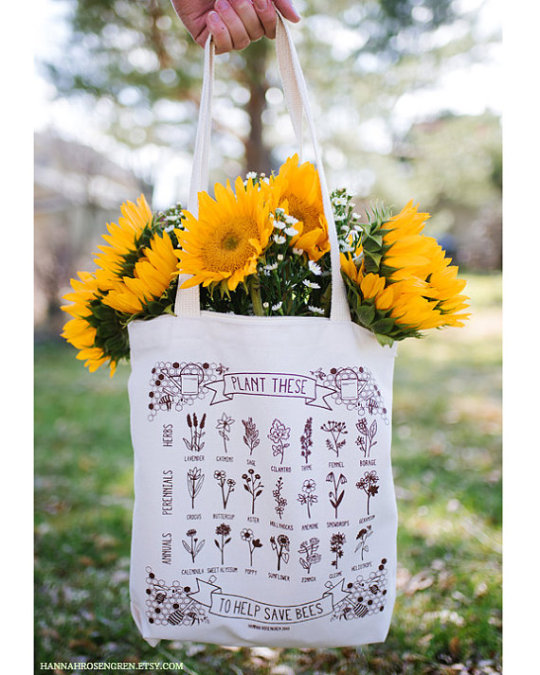
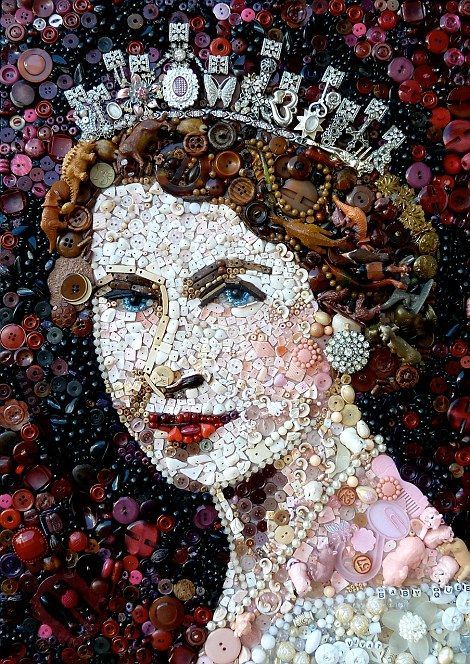
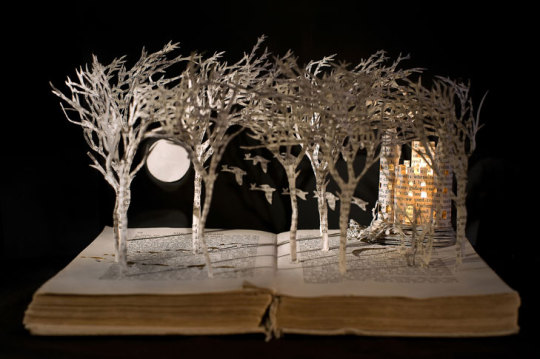
Textile Artist’s who consider Ecology within their Practice: For this task we where asked to look at textiles designers that engage with the idea of ecology within their practice. Ecology covers a lots of different aspects from conditions for workers, how and where fabrics come from as well as the affects on the environment. Within my own practice I feel like recycling is an element of ecology that I can work with heavily and not only is it good for environmental reasons it also adds character within my work, also since I specialise in print, it is a method that can easily be used to send a message; another element I’m keen to explore. Because of these reasons I decided to look at artists that work by these aspects.
Hannah Rosengren- Rosengren is an American illustrator who’s work is heavily inspired by her love of nature and her want to protect and help the environment; that is why she started creating a selection of items to help promote the messages to help with environmental issues. Figure 1 that I included is an image of one of her hard printed tote bags on bags made from recycled cotton and bottles. Her design features what plants and herbs help encourage bee’s and therefore there survival. Print is such a effective way to get across a message in a way that is visually pleasing. Within my own work I would like to look at perhaps creating work that helps reflect my own opinions and seeing how these opinions can be created into designs.
Jane Perkins- An artist who works primarily with found objects, taking these objects and creating a range of different products from portraits to jewellery, Perkins loved the history and the story behind each of the objects as well as the random nature that recycled products gave to her work, by not knowing what items and objects she would require it gave her work a more interesting and bespoke quality to it. Although Perkins doesn’t work with recycled items primarily for ecological reasons, she does understand the benefits of recycled items, taking unwanted or broken goods and giving them a new life.
Su Blackwell- A textile artist that works exclusively with the method of paper cutting, her work process looks at transforming mundane items by this technique. Commonly creating sculptures out of pages of books so it looks like a scene has grown right from the book itself, it is simple and effective, the concept behind the use of the recycled material is what makes it so strong. Blackwell also works with garments, cutting away pieces to make it look as though elements have flown away. I love her whimsical, magical quality to her work and how her simply but highly skilled techniques all work with recycled materials, it is this element that creates the magic of the piece.
Figure 1: Rosengren, H. (2015). Plant These to Help Save Bees Eco-Friendly Tote Bag / save the bees / pollinator preservation / environmental awareness.. [Screen Printed]. , retrieved from Etsy.
Figure 2: Perkins, J. (2012). The Queen. [Multi-Media]. , retrieved from Daily Mail.
Figure 3: Blackwell, S. (2008). The Wild Swans. [Paper Cutting]. , retrieved from Live Journal.
0 notes
Photo

Creating Stripe & Check Variations and Patterns in Illustrator:
In today’s session we learnt how to use the shape tool within illustrator to create patterns such as stripes and checks. Using the simple shapes available and using the many offered alterations such as layering and different variation of line as well as colour we can create effective and useful patterns. Although I don’t think i’d necessarily use this method myself within my practice, I definitely found it a useful technique to know and helped me get to grips with the way illustrator works as its not a program i’m very comfortable with but is definitely essential within the textiles industry.
(Lecture- 20th October 2016)
1 note
·
View note
Photo
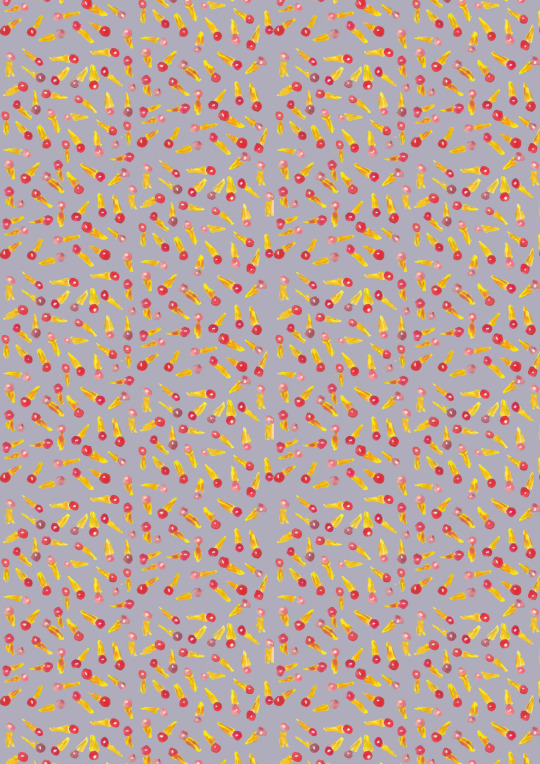
Taking Hand Drawn/Painted Works & Transforming them into Half Drop Repeats:
Creating half drop repeats are key within CAD and especially as a printer, it allows you see the full effect of how your design would look like without you having to physically create it. We created half drop repeats within photoshop and used the cloning tool to add in extra pieces of the design into where there seemed to be something missing. On top of this we could alter the quality of both the design and the background, however in this sample I decided to chose a background colour to compliment the design colour scheme. Once the gaps are filled in and the colour adjusted to the way you wish, you then offset the pattern and define the pattern and fill, to see the overall look.
This is definitely a method I will be heavily exploring in my work, as it is essential to printers; as repeat patterns are common practice in this specialism. I wouldn’t necessarily use this method for a final piece but as a way of sampling and using it as a way of showing how a design could look like, it is ideal.
(Lecture-20th October 2016)
0 notes
Photo
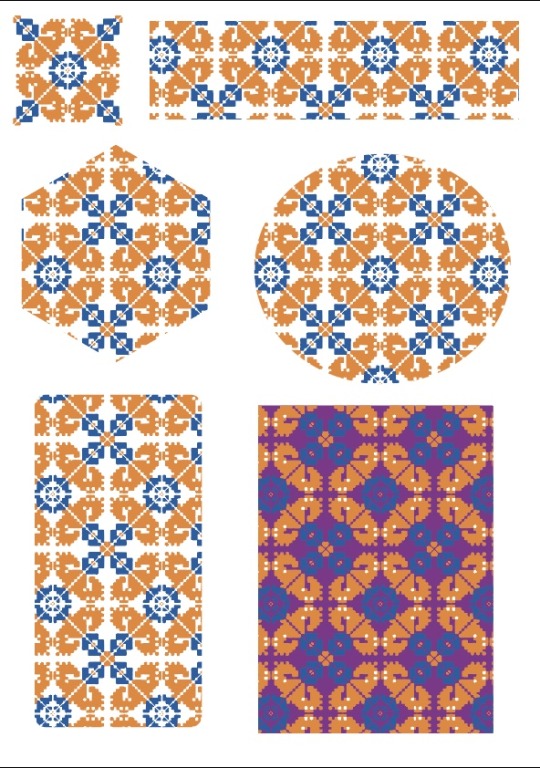
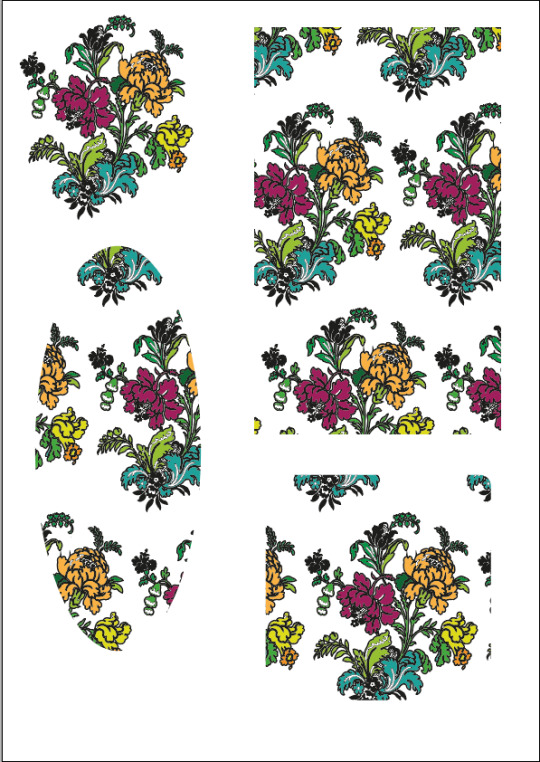
Recreating Patterns within Photoshop and Illustrator:
In this CAD session we discovered the true extent of how much you can alter a piece digitally. We took a vintage textile pattern from the university archives and edited it within photoshop to create a more contemporary and different style. We neaten up the appearance by cropping and changing the size and shape and then tidied it up with the magic wand tool; already by just doing this the design looked completely reformed, we then opened it up within illustrator, which allowed us to add the pattern into different shapes and even add background colours which gave the whole design and completely different look.
I loved how we could completely alter designs but still of course have elements of the original; something that works really lovely with vintage surface patterns and of course it gives me, as a print, the opportunity to trial out what my designs would look like within different shapes, colours etc.
The bottom piece is done in a similar manner as the top one but instead we focused on re-colouring the design (which was originally black and white) which just like the top method can completely re-transform the look of it.
(Lecture-13th October 2016)
1 note
·
View note
Photo
I love the different textures of this collage style piece, the colours and the mark making makes the whole composition magical, this is definitely something I love to do within my work and although I explore this style a lot, I perhaps may start playing around with darker/moodier colours with bright pops of colour within.

11K notes
·
View notes